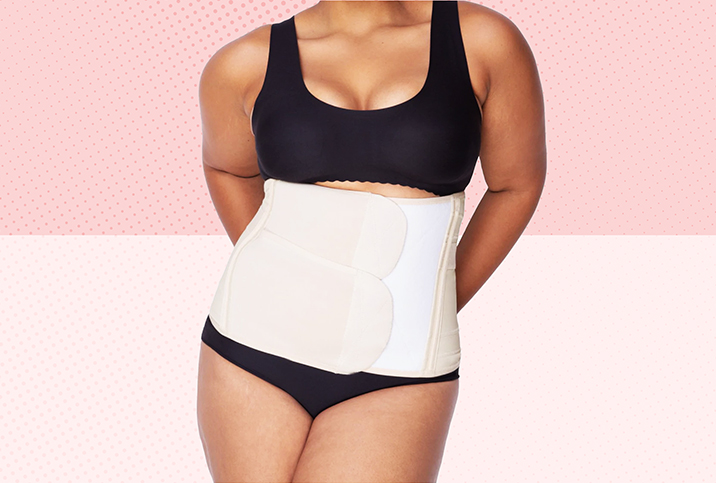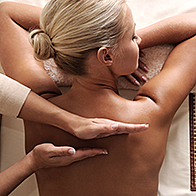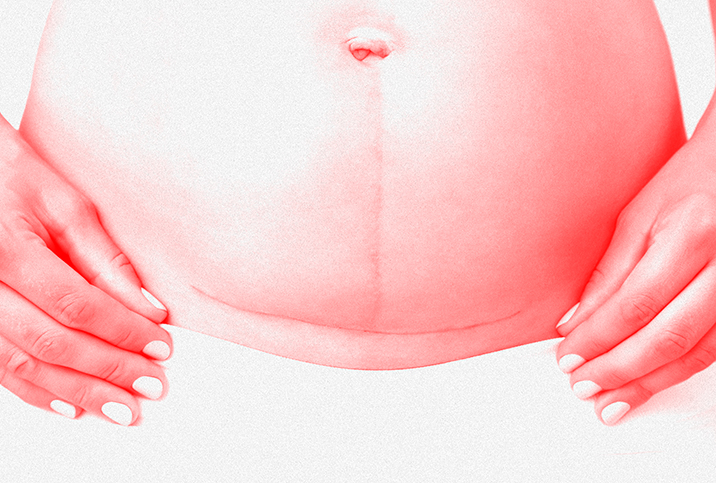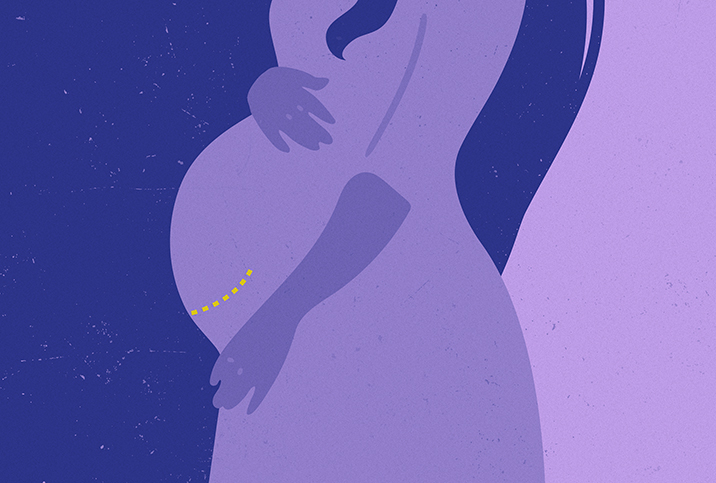What's a Postpartum Belly Wrap and Do I Need One?

Your body goes through some major changes during pregnancy, and after giving birth, you may feel like your body isn't one you recognize.
It's completely normal to feel both physically and emotionally uncomfortable in your postpartum body. To cope with this feeling, some people use belly wraps or binders to hold everything in place.
While it's difficult to pinpoint the exact origin of belly wrapping, many proponents of the practice say it's been around for centuries and that as far back as the time of ancient Japan and Malaysia, people tightly wrapped cloth around their postpartum bellies for comfort and support. Nowadays, wraps are usually made of soft, elastic fabric that extends from the bottom of your ribs to your hips.
While they can make you more comfortable—especially if you've had a cesarean section—there's no evidence that belly wraps make a difference in your body's recovery. However, they can boost your self-esteem and perhaps reduce pain and discomfort, which can be incredibly valuable during postpartum life.
What do belly wraps do?
During pregnancy, the uterus gets bigger, pushing your stomach and intestines out of the way and placing pressure on the liver and lungs. This stretches the abdominal muscles otherwise known as abs. Sometimes, the abs split down the middle, which is called diastasis recti. This condition is very common, but having strained ab muscles that have been through the wringer can be uncomfortable and even cause back pain.
Belly wraps can be particularly helpful for people who have had C-sections, as the wrap can prevent clothes from rubbing on the incision site. However, you should wait a few weeks before trying a wrap or binder, and always check with your doctor first.
While a belly wrap can make you feel more comfortable and self-confident, it likely won't do more than that—so don't expect it to.
Despite popular claims on blogs and Instagram, belly wraps don't accelerate the healing process. They don't make the abs come together faster, they don't speed up recovery, and they don't shrink your stomach. But they can make you feel a whole lot better, especially if you're feeling self-conscious about your belly.
"Belly wrapping and binding may aid new mothers in feeling more at home in their bodies," said Kassondra Glenn, L.M.S.W., an Albuquerque, New Mexico-based licensed social worker. "However, it is important to spend time thinking about how their bodies have changed. Practicing acceptance toward themselves as they are is a sustainable way to build self-esteem over time."
Additionally, Glenn emphasized that new parents shouldn't use belly wrapping as a crutch. She said it can be harmful to continue to belly wrap or bind simply to hide something that is perceived as "wrong."
Belly wraps vs. abdominal binders
There are loads of products—bands, belts, wraps, binders—out there on the post-pregnancy market, and it can be hard to know which one to choose. However, it's important to note that there is a distinct difference between belly wraps and abdominal binders.
Wraps are commercially available, unregulated products. They're considered an alternative, complementary option people can try. While they can make you feel more comfortable, there's no evidence that they actually help you heal.
In contrast, abdominal binders are regulated medical products that have clinical use. A doctor might recommend them to someone who has had a C-section or has back or abdominal pain after birth.
"The goal after delivery is to get people moving, so giving physical support with a binder can sometimes assist with that," said Carolyn Cokes, M.D., an OB-GYN at Mercy Medical Center in Baltimore.
But the binder won't do the work for you.
"Eventually, I recommend starting postpartum core exercises so that the core muscles can start doing what the binder was doing," Cokes said. "As always, it's an individualized choice, and people can discuss with their doctor whether or not one is recommended for them."
Who needs one?
Anyone can use a belly wrap after birth. If it makes you feel more comfortable, there is no harm in wearing one, as long as you do so safely. However, binders are particularly helpful for certain people.
"Postpartum abdominal binders are most useful for either people who have had a C-section or people with abdominal wall defects, like diastasis recti," Cokes said. "They essentially hold everything in place. For example, immediately after a C-section, not having to use those very sore muscles keeps pain levels down and moving more comfortable."
Research backs this up. Wearing a binder after a C-section is associated with less pain, which in turn leads to increased mobility, according to a 2019 study published in Obstetrics & Psychology journal.
It's important to remember that while binders can help people who need them, they are intended for clinical use, and not everyone needs one.
"I don't recommend them for everyone," Cokes said. "Not everyone needs one postpartum. Even some people who have a C-section don't need them."
Using belly wraps safely
First, always consult your doctor before trying a wrap. If you need a binder, they can recommend one that will work for you and give you instructions on how to use it. If you're just interested in trying a belly wrap, they can advise you on how to do so safely.
There are a few important considerations to keep in mind, including:
- Not keeping the wrap too tight, as this can put pressure on the organs and damage the pelvic floor
- Choosing a wrap that is comfortable and fits properly
- Using breathable, elastic wraps with plenty of stretch
- Stopping use immediately if the wrap causes bleeding, dizziness or other worrying symptoms
Using a belly wrap or binder isn't for everyone, but they can make a world of difference for some people.
"[Belly wrapping] may help new mothers temporarily increase their self-esteem or confidence," said Pareen Sehat, a registered clinical counselor in Vancouver, British Columbia. "They should not be pressured to achieve the perfect body right after childbirth. New mothers must be supported and reminded that there is no shame in having a 'mom bod.'"




















